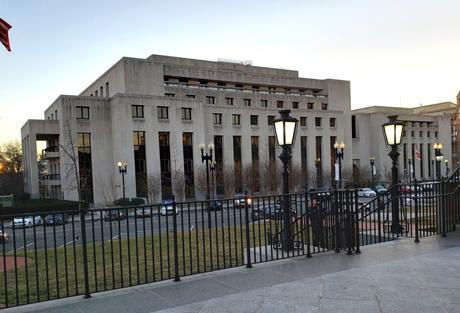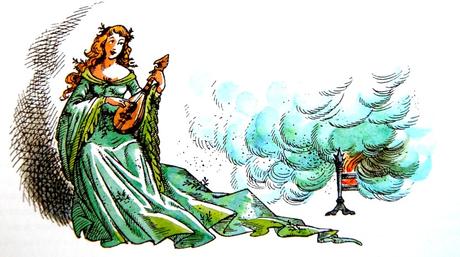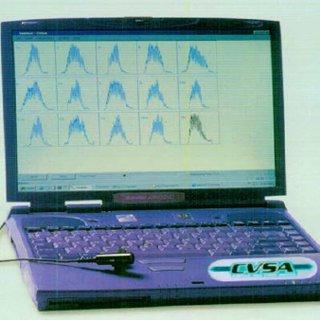This is the fourth segment of the David Black Story. Please check out segments one, two, and three before continuing.
Hours after Alice Chow was pronounced dead at Howard University Hospital, Jeff Mayberry and Joe Fox, homicide detectives with the Metropolitan Police Department, came knocking on the door of Barbara Marshall’s apartment.
Barbara was sure they were looking for her friend, Larry Johnson. In a sworn statement provided on the verge of trial to Stephen Roth, a defense investigator, Barbara explained that, previous to the Chow homicide, Larry had been banned from the building. His very presence there constituted a crime. Moreover, he had been “beat-up” by police officers the night before and had spent the night with her.
But Fox and Mayberry weren’t looking for Larry. Alice Chow had been shot dead on K street. The police wanted to know who pulled the trigger.
Barbara had nothing of interest to share with the detectives. She had been in her apartment on the 6th floor the entire time, she said. She heard shots fired, but saw nothing. Since her apartment faced onto the back parking lot, she had no view of K street.
In the statement Barbara gave to Stephen Roth (which I will call “the Roth Statement”) she denied seeing anything prior to the sound of gunfire. But when she heard shots fired, she naturally wanted to know what was going on. First, she looked out her apartment window where she saw Mr. Ray, a friend who lived on her hall, walking across the parking lot. Ray said he didn’t know anything and Barbara moved to the hall window.
The scene on the street was a blur. Barbara is extremely nearsighted and wasn’t wearing her glasses. She thought she saw someone running, but had no idea who it was.
The Roth Statement contained another interesting detail. Larry Johnson was still with her when gunfire erupted on the street. When the police arrived, she quickly directed Larry to the elevator for his own protection, then returned to her room. If this is true, Larry could have seen nothing on the morning Alice Chow died.
Larry realized that the police didn’t care what he might have seen after the shooting; they wanted a witness to the shooting itself. If he wanted a break from the police, he needed a shooter in his story. If we believe (as I do) that Barbara’s Roth statement is essentially accurate, it gives us crucial insight into the origins of what I call the “runner-shooter” story that was presented at trial.
Although her vision was fuzzy, Barbara definitely saw a man running when she looked out her hallway window. By itself, this wasn’t a particularly significant detail. As we have seen in earlier posts in this series, lots of people were running moments after the shooting. The police were convinced that Ms. Chow was killed by a stray bullet, and several witnesses reported seeing a running man. What if the bullet that struck Ms. Chow had been fired at the running man? All Larry had to do was to provide names for the (June Bug) and, with a little help from Fox, the shooter (David Black).
And now, the police wanted Barbara to corroborate Larry’s story. This was critical because a man facing a long list of criminal charges (which was destined to grow in coming days) was nobody’s idea of a reliable witness.
Police officers kept rapping on Barbara’s door, asking the same questions and receiving the same answers. But when Larry Johnson named the shooter, Fox dispatched officer Roger Venzin to bring Barbara down to police headquarters, the imposing Henry J. Daly Building.

What followed is the most classic case of gaslighting I have ever encountered. “Gaslighting” is a form of psychological abuse designed to force another person to doubt their own memory, judgment or even sanity. Gaslighting is usually intentional, but it doesn’t have to be. Gaslighting is always a means to a specific end. In this case, the goal was to get Barbara Marshall to corroborate Larry’s story.
Detective Fox decided to define Larry Johnson as a reliable witness. If Larry said Black was the shooter; Black was the shooter. If Larry said Barbara was a witness to the shooting; Barbara was a witness. There is no point in asking if Fox really believed any of this. He was trying to close a potentially explosive case. For Fox, “the truth” was whatever helped him check the Chow case off his list or responsibi
Police officers typically believe they can tell distinguish between liars and truth-tellers. Studies show that even experienced cops are no more likely to distinguish a lie from the truth than an average college sophomore. The same techniques of persuasion used to elicit truth from liars can, in extreme cases, change the truth into a falsehood. Put enough pressure on a vulnerable truthful person, and you can get them to believe a lie.
Most of us think of memory as a kind of videotape imbedded in our brains. But that’s not the way memory works. Memories are like stories we repeat to ourselves; stories that change over time. Exert enough pressure and the average person will “remember” events that didn’t happen, or forget actrual experiences.
Gaslighting is not restricted to police interrogation rooms, of course. Abusive parents gaslight their children. Politicians (as we have recently witnessed) can gaslight large portions of the electorate. Guardians of the status quo gaslight the public into rejecting any reference to America’s historical sins. But gaslighting is particularly dangerous in the interrogation room.
In The Silver Chair, a children’s fantasy written by C.S. Lewis, two English school children find themselves transported to the mysterious land of Narnia. After a series of strange adventures, Clarence Eustace Scrubb and Jill Pole find themselves deep beneath the surface of the earth in “Underland”. This dark realm is ruled by The Lady of the Green Kirtle, a beautiful princess with a soothing voice who, it turns out, is actually a green dragon in disguise (remember, this is a children’s fantasy).

When the children suspect that the princess harbors villainous motives, she throws a handful of green powder into the fireplace, and picks up an instrument much like a mandolin.
The green powder “did not blaze much,” Lewis tells us, “but a sweet and drowsy smell came from it. And all through the conversation which followed, that smell grew stronger, and filled the room, and made it harder to think.”
Then, the princess began to strum her mandolin: “a steady, monotonous thrumming that you didn’t notice after a few minutes. But the less you noticed it, the more it got into your brain and your blood. This also made it hard to think.”
When the sweet smell and the thrumming produced the desired effect, the princess began to explain that, although they may think they came from the land of Narnia, no such place existed. In fact, Underland was all that existed.
Jill Pole fought off this bizarre claim by trying to remember people and places outside of Underland. But everything had grown fuzzy and uncertain. “It didn’t come into her head that she was being enchanted,” Lewis explains, “for now the magic was in its full strength; and of course, the more enchanted you get, the more you feel that you are not enchanted at all. She found herself saying (and at that moment it was a relief to say):
‘No. I suppose the other world must be all a dream.’
‘Yes. It is all a dream,’ said the Witch, always thrumming.
‘Yes, all a dream,’ said Jill.”
What happened to Barbara Marshall in the harsh confines of the Henry J. Daly building was very similar to what Jill Pole experienced in The Silver Chair.
Gaslighting can be a brutal business, a form of bullying, and that is the approach that Detective Fox initially took. Before Barbara was ushered into Fox’s office, she was “interviewed” by two other officers. They told her she was lying, and they knew she was lying, so she might as well come clean.
Barbara stuck to her guns.
When she found herself face-to-face with Fox, the routine was the same. In police interrogations, gaslighting is often a group activity. When three officers in a row refuse to believe a word you are saying, and shout you down every time you repeat a story they don’t want to hear, you begin to doubt yourself. They seem so confident.
Barbara was rattled, but she stuck to her story. She hadn’t seen anyone fire a gun on the day Alice Chow was murdered and that was that.
Eventually, Fox threw up his hands and had Barbara driven back to her apartment. The next, just as she was beginning to think her ordeal was over, she was snatched back to Fox’s office after office hours. The same weary scenario played out again. Fox insisted she had witnessed the shooting; Barbara insisted she hadn’t. Finally, in exasperation, Fox pulled an ace out of his sleeve.
Detective Phinehas Young was home with his family when he got a call from Fox and it was well approaching 8 p.m. by the time he arrived at police headquarters. Detective Young had taken a one-week course that authorized him to administer the Computer Voice Stress Analyzer (CVSA).
The Wikipedia article on the Computer Voice Stress Analyzer calls it “a pseudoscientific technology that aims to infer deception from stress measured in the voice.” Test subjects are told that the test can scientifically detect a lie. It can’t. But if the test subject believes it can, the CVSA can produce impressive results.

Barbara was asked fifteen yes-no questions, ten of which had an obvious answer: “Are you sitting down; Is the month March”, etc. The other five questions pertained to the homicide case under investigation: “Do you know who shot Ms. Chow; did you see who shot Ms. Chow; do you suspect someone of shooting Ms. Chow; do you know who shot Ms. Chow; and, did you see who shot Ms. Chow?”
Barbara answered “yes” to all the filler questions, and “no” to all the Chow-related inquiries. Then, she was sent back to Fox who informed her that she had “failed” the test.
Detective Young administered the same test a second time, and then a third. Fifteen times, Barbara was asked if she knew anything about the Chow murder. Fifteen times, she said no.
After the third run-through, Fox informed Barbara that the test proved she was lying. According to the Barbara’s Roth statement, the detective became hostile and demanding. “Stop bullshitting me,” he barked. Then, he laid a picture of June Bug on the table beside a picture of David Black. “Did this one shoot at this one?” he asked.
Like Jill Pole in The Silver Chair, Barbara was no longer sure what she believed or what she had seen. A series of police officers had accused her, repeatedly, over a six-week period, of lying to them. And now a test had proven with scientific precision that she was lying. Maybe she was.
Barbara’s spirit broke. “I told him I saw one person that was in the picture near a parked dark color car,” she told investigator Roth. “And the other person in the other picture running away from the car. I just said this because I was scared to death and wanted to go home. This incident, of the two people shooting at each other were all made up. All I wanted was to go home.”
The only surprising element to this story is that Barbara clung to the truth as long as she did. Court records report that she was addicted to crack cocaine back in 1997. The high degree of legal exposure as serious crack habit carried with it just heightened her vulnerability. The police could have her tossed out of her apartment. They could use the drug laws to put her in prison.
But her insistence that the shooting incident was “all made up” is only partially true. The government’s theory had been implanted in her memory. Sometimes she believed she had seen nothing; sometimes she doubted herself. It all depended on who was asking the questions.
Joseph Fox had no way of knowing when Barbara was lying and when she was telling the truth. It wasn’t his job to care. His job was to corroborate Larry Johnson’s testimony. Mission accomplished.
Fox would soon discover he had created a monster.
- Gaslighting: The David Black Story (part four)
- An easy game to play: The David Black Story (part three)
- A Spotted or Herbaceous Backson: The David Black Story (Part Two)
- Police-generated testimony 1: Six Impossible things before breakfast
- Police-generated testimony 1: David Black is innocent (and I can prove it)
Email Address:
